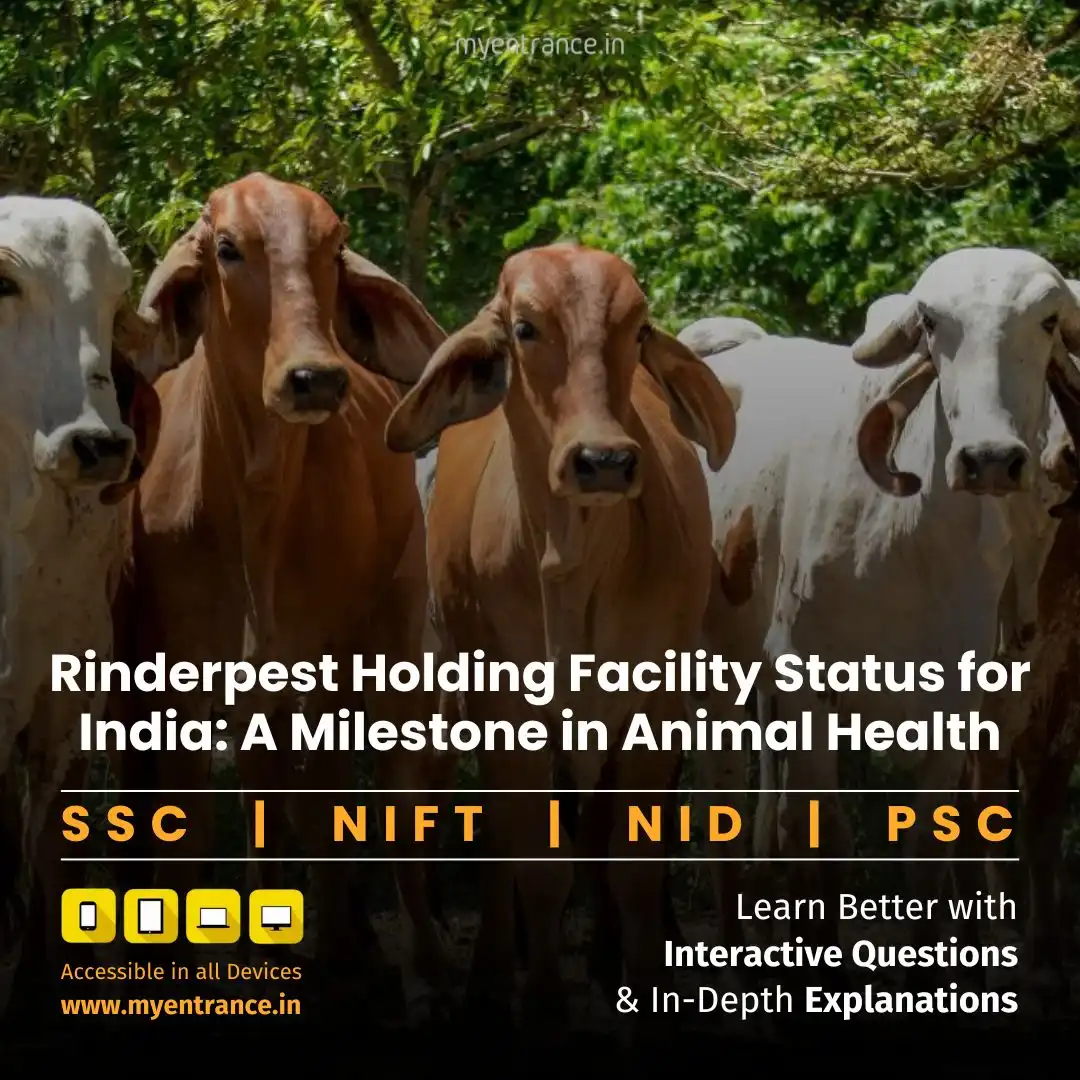Select Language
India’s ICAR-NIHSAD Designated as Rinderpest Holding Facility – A Global Achievement
India has taken a significant step in global animal health by securing the prestigious Rinderpest Holding Facility (RHF) status for ICAR-NIHSAD, Bhopal. This recognition highlights India’s commitment to biosafety and disease prevention on an international scale.
Understanding Rinderpest – The Cattle Plague
Rinderpest, often called “cattle plague,” was a deadly viral disease affecting cattle and other ruminants. Known for its high contagion rate, it caused massive livestock losses and threatened food security worldwide.
Global Eradication: The disease was officially eradicated in 2011 after a successful worldwide campaign led by the FAO (Food and Agriculture Organization).
Why Storage Matters: Even though eradicated, preserved virus samples are kept in high-security labs to prevent accidental outbreaks and aid future research.
Why Rinderpest Holding Facilities (RHFs) Are Crucial
RHFs are specialized labs authorized to store Rinderpest Virus-Containing Material (RVCM) under strict biosafety measures.
Preventing Re-emergence: Storing RVCM in controlled environments ensures the virus does not escape or get misused.
Limited Global Facilities: Only a few labs worldwide meet the stringent WOAH standards for RVCM storage.
Research & Preparedness: These facilities help in vaccine development and emergency response planning.
ICAR-NIHSAD’s Journey to RHF Status
The ICAR-National Institute of High Security Animal Diseases (NIHSAD) in Bhopal has been at the forefront of India’s animal health security.
2012: Designated as India’s national repository for RVCM.
2019: Applied for RHF status to WOAH.
March 2025: Passed a rigorous inspection by international experts, confirming compliance with biosafety protocols.
May 2025: Officially recognized as a Category A RHF during the 92nd WOAH General Session in Paris.
Global Impact of India’s RHF Recognition
With this achievement, India joins an elite group of six facilities worldwide authorized to hold RVCM.
Strengthens India’s Role: Positions India as a key player in global animal health governance.
Boosts Biosecurity Standards: Enhances international trust in India’s disease containment capabilities.
Future Prospects: Opens doors for Category B designation, allowing vaccine-related research.
What’s Next for India’s Animal Health Sector?
The WOAH has encouraged India to take a more active role in vaccine seed material management.
Potential for Category B Status: Could allow vaccine development using RVCM under strict guidelines.
Collaborative Research: Opportunities to work with global institutions on emerging animal diseases.
Enhanced Surveillance: Strengthening India’s ability to prevent future outbreaks.
Sample Questions & Answers (FAQs)
1. What is a Rinderpest Holding Facility (RHF)?
An RHF is a high-security laboratory approved by WOAH to store Rinderpest virus samples safely to prevent accidental outbreaks.
2. Why was ICAR-NIHSAD chosen as an RHF?
Due to its BSL-3 containment facilities, strict biosafety protocols, and proven track record in handling dangerous animal pathogens.
3. Is Rinderpest still a threat today?
No, it was eradicated in 2011, but stored samples are kept for research and emergency preparedness.
4. How many RHFs exist worldwide?
Only six facilities, including India’s ICAR-NIHSAD, have this designation.
5. What does Category A RHF status mean?
It permits storage of RVCM, while Category B (a future goal) would allow vaccine-related research.
Most Predicted Questions
Comprehensive study materials, Expert-guided tips & tricks, Mock tests and instant results.
Start your SSC, NIFT, NID, FDDI, PSC journey today with MyEntrance, your ultimate online coaching platform.







